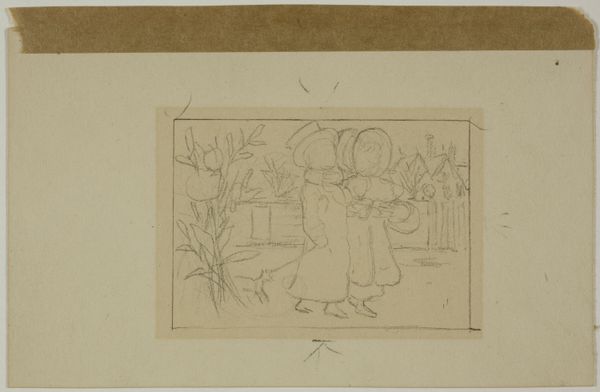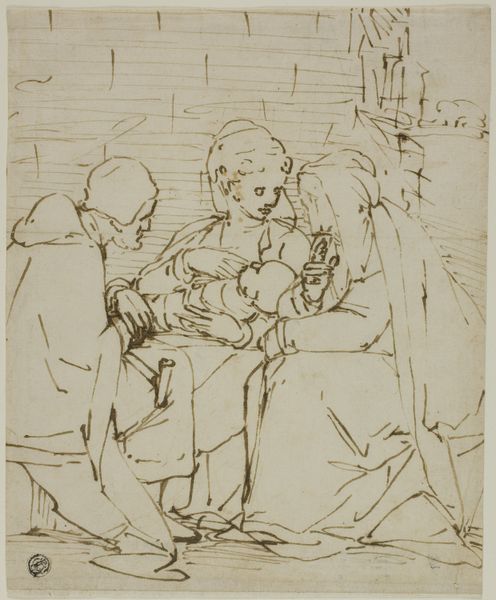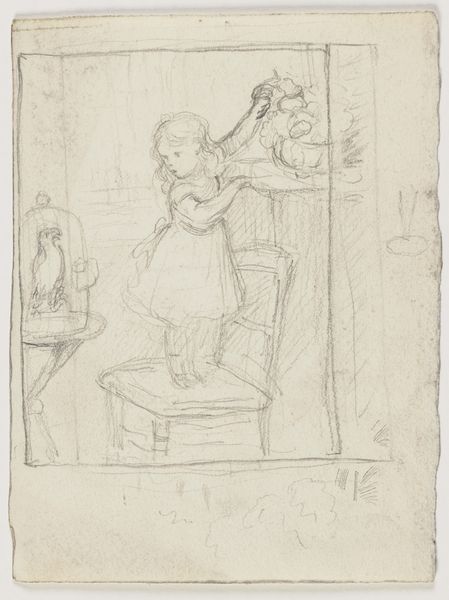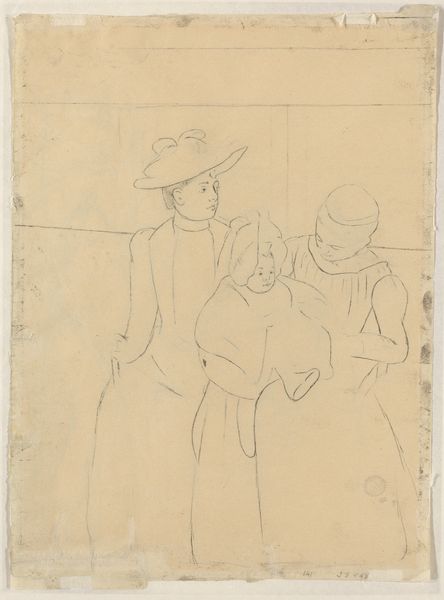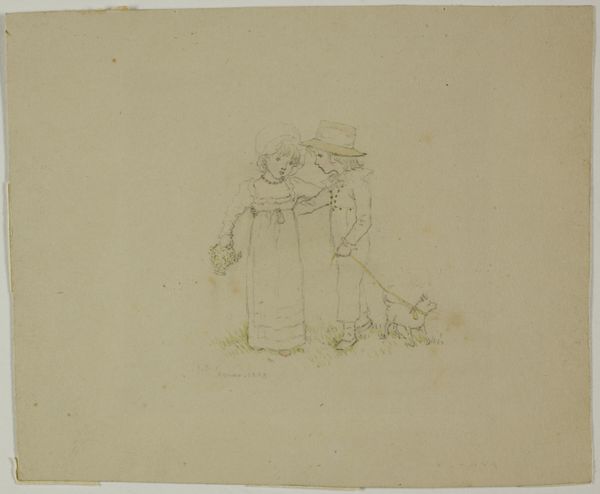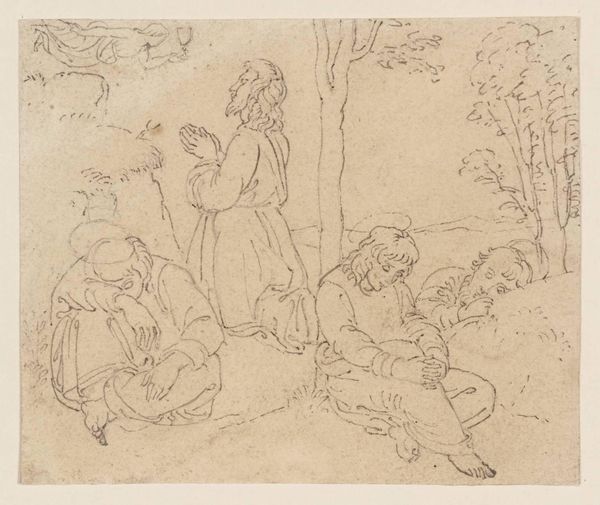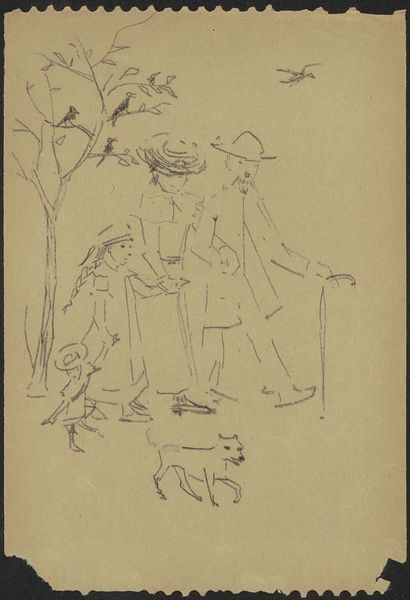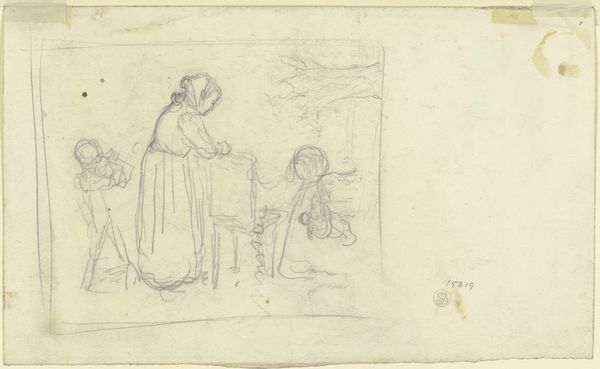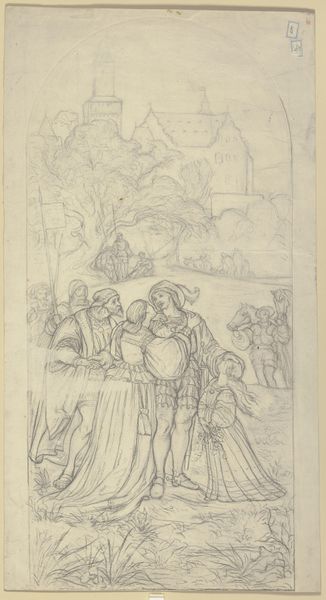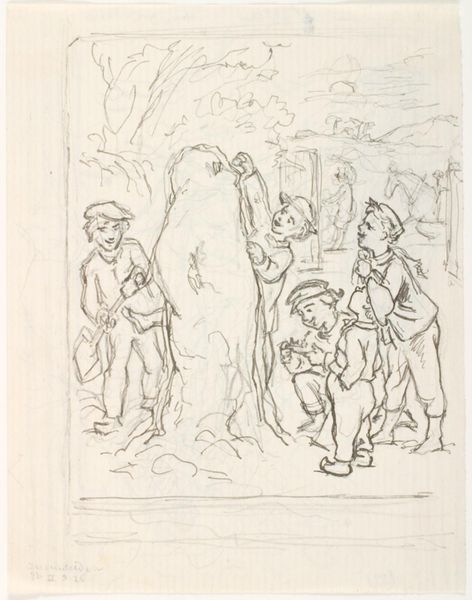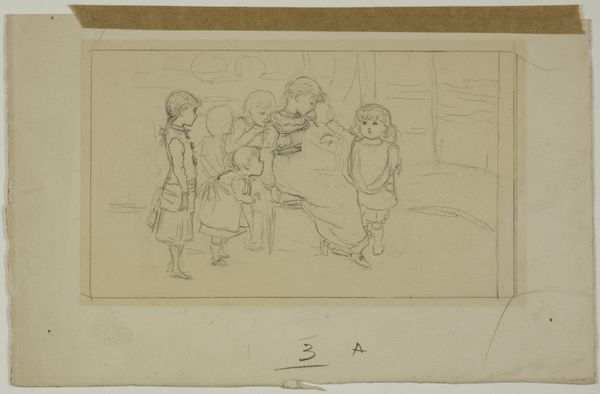
drawing, coloured-pencil, paper, dry-media, pencil, graphite
#
portrait
#
drawing
#
coloured-pencil
#
narrative-art
#
figuration
#
paper
#
dry-media
#
pencil
#
graphite
Dimensions: 160 × 118 mm
Copyright: Public Domain
Curator: Welcome. We’re looking at Kate Greenaway's "Discovery of Bird's Nest," date unknown, currently held at the Art Institute of Chicago. This lovely piece employs graphite, pencil, and colored pencil on paper. Editor: The composition feels rather innocent. There's a nostalgic simplicity in its depiction of childhood curiosity. The limited color palette evokes a sense of gentleness and understated observation. Curator: Greenaway's aesthetic aligns with the late 19th-century Arts and Crafts movement. There’s a celebration of nature, evident in the subject matter and a rejection of industrialization in her return to simpler artistic techniques. Editor: And isn't it intriguing how she frames childhood? These aren't rambunctious, rebellious figures, but idealized versions of youth—perfectly pleasant and neatly contained within the composition. It serves to affirm certain social ideals of her time. Curator: Indeed. The artist cultivated a deliberate visual language to portray an innocence that might not necessarily mirror reality. Note the delicate lines, and the subtle use of perspective. They guide your eye through the scene but also confine it, creating a self-contained world. Semiotically, the bird’s nest, presented almost reverently, might function as a potent symbol. Editor: The fragility of life? A reminder of domesticity and natural order? Or maybe the colonial implications of interacting with the natural world? Curator: The discovery also represents access. Not only in regards to the lives of animals, but perhaps as to what children could encounter at the time versus now. And though seemingly uncomplicated, works like this also impacted educational reforms with their sentimental appeal and reinforcement of didactic possibilities. Editor: The art's simplicity is a portal to complex historical discussions, just like all artworks if we only scrutinize a bit. Greenaway used that deceptive "artlessness" to comment on larger issues, but I concede it also perpetuates societal norms. Curator: Precisely. Now, considering everything, I have to appreciate anew this visual encoding that offers historical insights and visual delight in such unassuming style. Editor: And I am thinking more critically about whose perspectives shaped Greenaway's art. A rewarding experience.
Comments
No comments
Be the first to comment and join the conversation on the ultimate creative platform.

